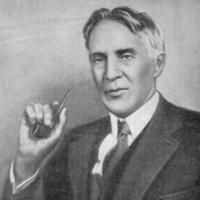Get Involved
- Optica on Ukraine
- Awards & Honors
- Diversity, Equity & Inclu...
- Early Career Professional...
- Education Outreach
- Global Policy & Affairs
- Local Section
- Virtual Engagement
- Students
-
Technical Groups
- Bio-Medical Optics
- Fabrication, Design and Instrumentation
- Information Acquisition, Processing and Display
- Optical Interaction Science
- Photonics and Opto-Electronics
- Vision and Color
- Technical Group Leadership Volunteers
- Technical Group Webinars
- Technical Group Events
- Technical Group Search
- Technical Group Prizes
- Volunteer
- Optica on Ukraine
- Awards & Honors
- Diversity, Equity & Inclusion
- Early Career Professionals
- Education Outreach
- Global Policy & Affairs
- Local Section
- Virtual Engagement
- Students
-
Technical Groups
- Bio-Medical Optics
- Fabrication, Design and Instrumentation
- Information Acquisition, Processing and Display
- Optical Interaction Science
- Photonics and Opto-Electronics
- Vision and Color
- Technical Group Leadership Volunteers
- Technical Group Webinars
- Technical Group Events
- Technical Group Search
- Technical Group Prizes
- Volunteer
R. W. Wood Prize
The award was established in 1975 to honor the many contributions that R. W. Wood made to optics.
Society Connection
Robert Williams Wood was an Honorary Member and was the third recipient of the Frederic Ives Medal / Jarus W. Quinn Prize.
Key Funder
Xerox Corporation
About R.W. Wood
 Wood was born in Concord, MA, USA, on 2 May 1868, and is best known for explaining the black-light effect. He earned chemistry degrees from Harvard and the University of Chicago. He taught physics at the University of Wisconsin from 1897 until 1901, when he became professor of experimental physics at Johns Hopkins University. He studied problems of diffraction and interference and produced blazed echelette gratings for infrared radiation.
Wood was born in Concord, MA, USA, on 2 May 1868, and is best known for explaining the black-light effect. He earned chemistry degrees from Harvard and the University of Chicago. He taught physics at the University of Wisconsin from 1897 until 1901, when he became professor of experimental physics at Johns Hopkins University. He studied problems of diffraction and interference and produced blazed echelette gratings for infrared radiation.
He did much work on ultraviolet light as well as fluorescence, and invented the first filter for ultraviolet light that excluded all visible light. Wood advanced infrared and ultraviolet photography. He also developed the first practical liquid mirror telescope by spinning mercury to create a paraboloidal shape. His text Physical Optics became the most widely used book on the topic. It was reprinted in 1988 by the Society.
Wood received many honors including the Royal Society’s Rumford Medal, the National Academy of Sciences’ Henry Draper Medal, the Franklin Institute’s John Scott Medal, the Frederic Ives Medal / Jarus W. Quinn Prize, and a Gold Medal from the Italian Society of Science. He was elected an Honorary Member in 1944.
He served as president and vice-president of the American Physical Society and was a member of numerous organizations including the Royal Society, London Optical Society, Russian Academy of Science, National Academy of Sciences, Academy of Arts and Sciences, and the Philosophical Society. He died 11 August 1955.
